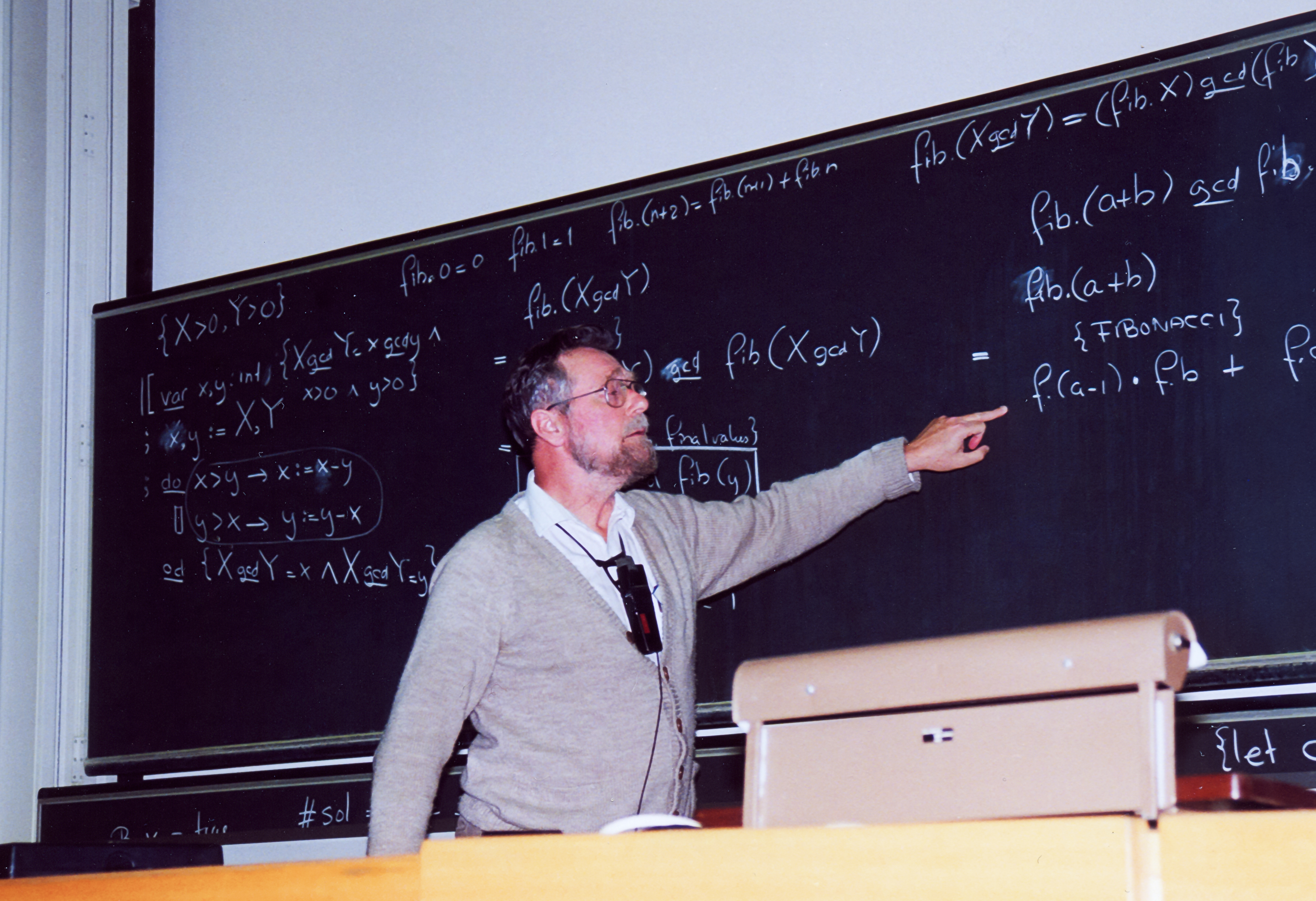|
Professor Shonku (short Story Collection)
''Professor Shonku'' is a collection of nine science fiction short stories by Satyajit Ray featuring the fictional scientist-inventor Professor Shonku. The collection was first published in 1965 by Calcutta publisher NewScript Publications. The original collection contained seven stories, while the eight and ninth stories were added in later editions. Eight of the nine stories were published in the children's magazine '' Sandesh'', while the ninth, "Professor Shonku o Bhoot", was previously published in ''Ashcharya''. The short stories are written in epistolary form, using dated diary entries as a framing device. Introduction The first of Professor Shonku's diaries is discovered by Tarak Chatterjee, an amateur (and rather poor) writer, who has a fascination for tiger stories. On hearing that a large meteor had crashed into the Matharia areas of the Sundarbans, he visited the location in search of tiger skin. Failing to find them, he looked around only to find a red notebook ins ... [...More Info...] [...Related Items...] OR: [Wikipedia] [Google] [Baidu] |
Satyajit Ray
Satyajit Ray (; 2 May 1921 – 23 April 1992) was an Indian film director, screenwriter, author, lyricist, magazine editor, illustrator, calligraphy, calligrapher, and composer. He is widely considered to be one of the greatest and most influential film directors in the history of cinema. He is celebrated for works including ''The Apu Trilogy'' (1955–1959), Jalsaghar, ''The Music Room'' (1958), Mahanagar, ''The Big City'' (1963)'', Charulata'' (1964), and the ''Goopy–Bagha'' trilogy (1969–1992). Ray was born in Calcutta to author Sukumar Ray and Suprabha Ray. Starting his career as a commercial artist, Ray was drawn into independent film, independent film-making after meeting French filmmaker Jean Renoir and viewing Vittorio De Sica's Italian neorealism, Italian neorealist film ''Bicycle Thieves'' (1948) during a visit to London. Ray directed 36 films, including feature films, documentaries, and short subject, shorts. Ray's first film, (1955), won eleven international ... [...More Info...] [...Related Items...] OR: [Wikipedia] [Google] [Baidu] |
Android (robot)
An android is a humanoid robot or other artificial being, often made from a flesh-like material. Historically, androids existed only in the domain of science fiction and were frequently seen in film and television, but advances in robotics, robot technology have allowed the design of functional and realistic humanoid robots. Terminology The ''Oxford English Dictionary'' traces the earliest use (as "Androides") to Ephraim Chambers' 1728 ''Cyclopaedia, or an Universal Dictionary of Arts and Sciences, Cyclopaedia,'' in reference to an automaton that St. Albertus Magnus allegedly created. By the late 1700s, "androides", elaborate mechanical devices resembling humans performing human activities, were displayed in exhibit halls. The term "android" appears in US patents as early as 1863 in reference to miniature human-like toy automatons. The term ''android'' was used in a more modern sense by the French author Auguste Villiers de l'Isle-Adam in his work ''The Future Eve, Tomorrow's E ... [...More Info...] [...Related Items...] OR: [Wikipedia] [Google] [Baidu] |
Brazil
Brazil, officially the Federative Republic of Brazil, is the largest country in South America. It is the world's List of countries and dependencies by area, fifth-largest country by area and the List of countries and dependencies by population, seventh-largest by population, with over 212 million people. The country is a federation composed of 26 Federative units of Brazil, states and a Federal District (Brazil), Federal District, which hosts the capital, Brasília. List of cities in Brazil by population, Its most populous city is São Paulo, followed by Rio de Janeiro. Brazil has the most Portuguese-speaking countries, Portuguese speakers in the world and is the only country in the Americas where Portuguese language, Portuguese is an Portuguese-speaking world, official language. Bounded by the Atlantic Ocean on the east, Brazil has a Coastline of Brazil, coastline of . Covering roughly half of South America's land area, it Borders of Brazil, borders all other countries and ter ... [...More Info...] [...Related Items...] OR: [Wikipedia] [Google] [Baidu] |
Circus
A circus is a company of performers who put on diverse entertainment shows that may include clowns, acrobats, trained animals, trapeze acts, musicians, dancers, hoopers, tightrope walkers, jugglers, magicians, ventriloquists, and unicyclists as well as other object manipulation and stunt-oriented artists. The term "circus" also describes the field of performance, training, and community which has followed various formats through its 250-year modern history. Although not the inventor of the medium, Newcastle-under-Lyme born Philip Astley is credited as the father of the modern circus. In 1768, Astley, a skilled equestrian, began performing exhibitions of trick horse riding in an open field called Ha'penny Hatch on the south side of the Thames River, England. In 1770, he hired acrobats, tightrope walkers, jugglers, and a clown to fill in the pauses between the equestrian demonstrations and thus chanced on the format which was later named a "circus". Performances deve ... [...More Info...] [...Related Items...] OR: [Wikipedia] [Google] [Baidu] |
Macaw
Macaws are a group of Neotropical parrot, New World parrots that are long-tailed and often colorful, in the Tribe (biology), tribe Arini (tribe), Arini. They are popular in aviculture or as companion parrots, although there are conservation concerns about several species in the wild. Biology Of the many different Psittacidae (true parrots) genus, genera, six are classified as macaws: ''Ara (bird), Ara'', ''Anodorhynchus'', ''Cyanopsitta'', ''Primolius'', ''Red-bellied macaw, Orthopsittaca'', and ''Red-shouldered macaw, Diopsittaca''. Previously, the members of the genus ''Primolius'' were placed in ''Propyrrhura'', but the former is correct in accordance with International Commission on Zoological Nomenclature, ICZN rules. In addition, the related macaw-like thick-billed parrot is sometimes referred to as a "macaw", although it is not phylogenetically considered to be a macaw species. Macaws are native to Central America and North America (only Mexico), South America, and form ... [...More Info...] [...Related Items...] OR: [Wikipedia] [Google] [Baidu] |
Guinea Pig
The guinea pig or domestic guinea pig (''Cavia porcellus''), also known as the cavy or domestic cavy ( ), is a species of rodent belonging to the genus ''Cavia'', family Caviidae. Animal fancy, Breeders tend to use the name "cavy" for the animal, but "guinea pig" is more commonly used in scientific and laboratory contexts. Despite their name, guinea pigs are not native to Guinea (region), Guinea, nor are they closely related to suidae, pigs. Instead, they originated in the Andes region of South America, where wild guinea pigs can still be found today. Studies based on biochemistry and DNA Hybrid (biology), hybridization suggest they are domestication, domesticated animals that do not exist naturally in the wild, but are descendants of a closely related cavy species such as ''Montane guinea pig, C. tschudii''. Originally, they were domesticated as livestock (source of meat) in the Andean region and are still consumed in some parts of the world. In Western society, the guin ... [...More Info...] [...Related Items...] OR: [Wikipedia] [Google] [Baidu] |
Formulae
In science, a formula is a concise way of expressing information symbolically, as in a mathematical formula or a ''chemical formula''. The informal use of the term ''formula'' in science refers to the general construct of a relationship between given quantities. The plural of ''formula'' can be either ''formulas'' (from the most common English plural noun form) or, under the influence of scientific Latin, ''formulae'' (from the original Latin). In mathematics In mathematics, a formula generally refers to an equation or inequality relating one mathematical expression to another, with the most important ones being mathematical theorems. For example, determining the volume of a sphere requires a significant amount of integral calculus or its geometrical analogue, the method of exhaustion. However, having done this once in terms of some parameter (the radius for example), mathematicians have produced a formula to describe the volume of a sphere in terms of its radius: : ... [...More Info...] [...Related Items...] OR: [Wikipedia] [Google] [Baidu] |
Invisibility
Invisibility is the state of an object that cannot be seen. An object in this state is said to be ''invisible'' (literally, "not visible"). The phenomenon is studied by physics and perceptual psychology. Since objects can be seen by light from a source reflecting off their surfaces and hitting the viewer's eyes, the most natural form of invisibility (whether real or fictional) is an object that neither reflects nor absorbs light (that is, it allows light to pass through it). This is known as transparency, and is seen in many naturally occurring materials (although no naturally occurring material is 100% transparent). Invisibility perception depends on several optical and visual factors. For example, invisibility depends on the eyes of the observer and/or the instruments used. Thus an object can be classified as "invisible" to a person, animal, instrument, etc. In research on sensorial perception it has been shown that invisibility is perceived in cycles. Invisibility is o ... [...More Info...] [...Related Items...] OR: [Wikipedia] [Google] [Baidu] |
Osteology
Osteology () is the scientific study of bones, practiced by osteologists . A subdiscipline of anatomy, anthropology, archaeology and paleontology, osteology is the detailed study of the structure of bones, skeletal elements, teeth, microbone morphology, function, disease, pathology, the process of ossification from cartilaginous molds, and the resistance and hardness of bones (biophysics). Osteologists frequently work in the public and private sector as consultants for museums, scientists for research laboratories, scientists for medical investigations and/or for companies producing osteological reproductions in an academic context. The role of an osteologist entails understanding the macroscopic and microscopic anatomies of bones for both humans and non-humans (courses in non-human osteology is known as zooarchaeology). Osteology and osteologists should not be confused with the pseudoscientific practice of osteopathy and its practitioners, osteopaths. Methods A typica ... [...More Info...] [...Related Items...] OR: [Wikipedia] [Google] [Baidu] |
Brontosaurus
''Brontosaurus'' (; meaning "thunder lizard" from the Ancient Greek, Greek words , "thunder" and , "lizard") is a genus of herbivorous sauropod dinosaur that lived in present-day United States during the Late Jurassic period. It was described by American paleontologist Othniel Charles Marsh in 1879, the type species being dubbed ''B. excelsus'', based on a partial skeleton lacking a skull found in Como Bluff, Wyoming. In subsequent years, two more species of ''Brontosaurus'' were named: ''B. parvus'' in 1902 and ''B. yahnahpin'' in 1994. ''Brontosaurus'' lived about 156 to 146 million years ago (mya) during the Kimmeridgian and Tithonian ages in the Morrison Formation of what is now Utah and Wyoming. For decades, the animal was thought to have been a Synonym (taxonomy), taxonomic synonym of its close relative ''Apatosaurus'', but a 2015 study by Emmanuel Tschopp and colleagues found it to be distinct. It has seen widespread representation in popular culture, being the archetyp ... [...More Info...] [...Related Items...] OR: [Wikipedia] [Google] [Baidu] |
Hypnotism
Hypnosis is a human condition involving focused attention (the selective attention/selective inattention hypothesis, SASI), reduced peripheral awareness, and an enhanced capacity to respond to suggestion.In 2015, the American Psychological Association Division 30 defined hypnosis as a "state of consciousness involving focused attention and reduced peripheral awareness characterized by an enhanced capacity for response to suggestion". For critical commentary on this definition, see: There are competing theories explaining hypnosis and related phenomena. ''Altered state'' theories see hypnosis as an altered state of mind or trance, marked by a level of awareness different from the ordinary state of consciousness. In contrast, ''non-state'' theories see hypnosis as, variously, a type of placebo effect,Kirsch, I., "Clinical Hypnosis as a Nondeceptive Placebo", pp. 211–25 in Kirsch, I., Capafons, A., Cardeña-Buelna, E., Amigó, S. (eds.), ''Clinical Hypnosis and Self-Regulat ... [...More Info...] [...Related Items...] OR: [Wikipedia] [Google] [Baidu] |






